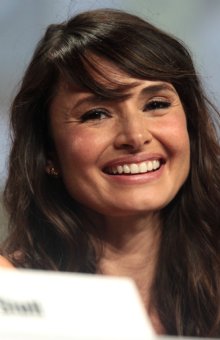"I believe that art has the power to change the world. To inspire people, to challenge their perspectives, and to create a better future for all of us"
About this Quote
Belief in art’s world-changing power asserts that culture precedes policy: what people can feel and imagine determines what they are willing to build. Art reaches people not by argument alone but through sensation, color, rhythm, narrative, form, awakening courage, empathy, and agency. A song can lend a crowd its heartbeat; a mural can turn a neglected wall into a declaration of presence; a film can let us inhabit a life unlike our own long enough to recognize its dignity.
To inspire is only the first movement. Art also unsettles habits of seeing. By reframing the familiar, it reveals what ideology keeps invisible: forgotten histories, structural injustices, the complexity behind slogans. It slows us down, interrupts certainty, and replaces reflex with reflection. That pause is politically potent; in it, new questions take root. When many people begin to ask different questions, institutions eventually must answer.
The promise of a better future rests on imagination. Social change requires prototypes of feeling and relation before it can become law. Theater rehearses courage; speculative fiction drafts blueprints; dance models cooperation and trust. Public and participatory art reclaim the commons, binding neighbors into temporary communities and seeding longer-term civic trust. None of this replaces organizing or policy, but it animates them, giving movements language, symbols, and the emotional stamina to persist.
For that power to serve all of us, access and plurality matter. A culture where only a few voices are amplified cannot remake the world for the many. Supporting arts education, equitable platforms, and spaces for risk allows more people to speak and be heard. Viewers share responsibility too: to meet works with curiosity, to converse across differences, to carry insights into daily choices. Faith in art is faith in our shared capacity to feel, imagine, and act together. That is how worlds shift. Slowly, then suddenly.
More details
About the Author
